Leaving the capital, you head south to the Kalahari Desert, it's an easy drive of roughly three hours, almost all on good tar roads. This gives you the chance to get used to your vehicle before you reach the gravel roads. A host of activities are available at the lodge (not included at the moment) including sunrise / sundowner drives, guided dune drives and cheetah excursions. Of course, you can also relax at the pool and enjoy the views.
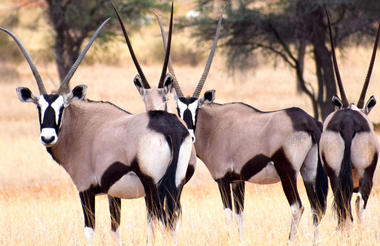
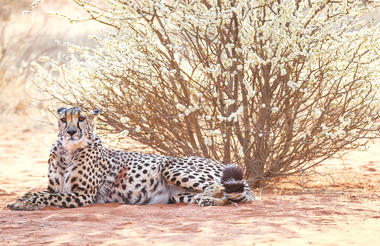

Sundowner Drive at Kalahari Anib Lodge
The best time to explore the desert is in the cool early morning hours. The myriad tracks and trails crisscrossing the seemingly lifeless orange sands are evidence of the nocturnal life of the more elusive residents of the Kalahari. After a hearty breakfast you continue your journey southwest to the Namib Desert. You travel via Mariental to Maltahohe, a small farming settlement on the edge of the escarpment. Depending on the rains you might be lucky to witness the lily fields at Sandhof (west of Maltahöhe). A huge field of lilies grows in a clay pan where rainwater collects. The bulbs only bloom after there has been enough rain to fill the pan with about 30 cm of water - not a common occurrence in Namibia. Heading down the escarpment mountains you reach your overnight accommodation on the edge of the Namib dune sea later this afternoon. The Tsaris Pass is steep in areas with twists and turns. Drive slowly and carefully. Relax at the swimming pool and enjoy the late afternoon light on the mountains.
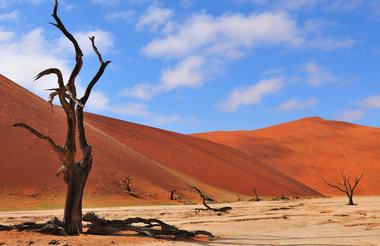
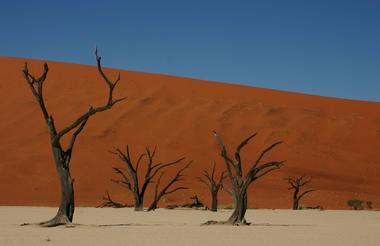
You have a full day to explore the dune fields and pans of Sossusvlei. The park gates open at sunrise and close at sunset. We recommend an early start to experience the beautiful early morning light on the dunes. And to enjoy the cooler early morning hours. Be sure to take plenty of water with you (at least 3 litres per person), a hat, a long-sleeved shirt to protect your arms, sunscreen and closed walking shoes (the sand will get hot!). You enter the park at the Sesriem Gate where you need to stop at the office to get your permit (valid from sunrise to sunset) and pay your park entry fees. From here there is a small tar road leading 60 kilometres into the dunes. It's a spectacular drive, take it easy and enjoy the scenery. The tar road ends at the 2x4 parking area at the 60-kilometre point. From here there is a 5-kilometre, sandy track into Sossusvlei. If you are not comfortable to drive this (it is very sandy and requires 4x4) there is a shuttle service from the 2x4 parking area in/out of Sossusvlei (additional charge payable on site / N$180,00 per person). Spend the morning exploring Sossusvlei & Dead Vlei then return to camp for lunch and a siesta or swim. In the cooler afternoon hours, you can explore Sesriem Canyon, located approximately 7 kilometres from the park gate. Just remember that the park gates close at sunset.
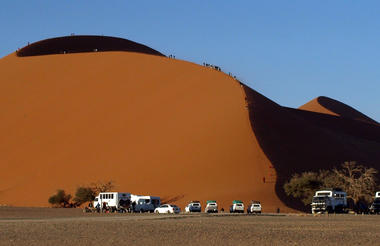
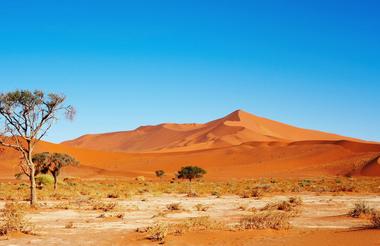
A fairly long but interesting drive today. You skirt around the main Namib Dune Sea to reach the coast. En route you pass petrified dunes, the Tropic of Capricorn (not looking very tropical) and negotiate your way through the Gaub & Kuiseb Canyons before you reach the coastal plains that roll all the way down to the ocean. You'll notice a drop in the temperature as you get closer to the coast. The cold Benguela Current modifies the coastal temperatures and offers a welcome relief from the summer heat. You might want to detour to visit the Walvis Bay lagoon area, home to thousands of wetland birds including flamingos. The last section of your journey today is a beautiful drive between the dunes and the ocean.
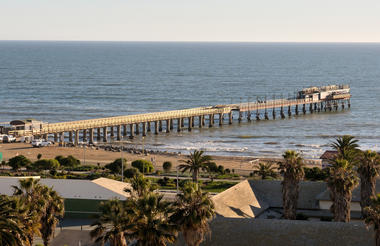
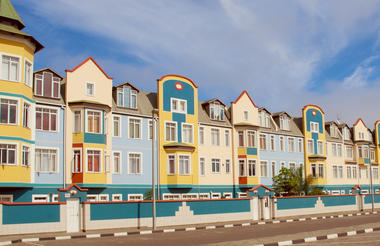
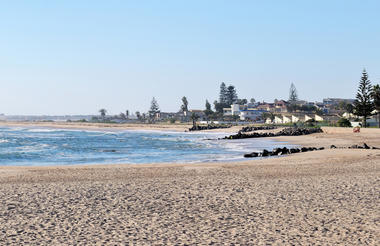
A full day to relax and explore this quaint desert town. Swakopmund has made a name for itself as the activity centre of Namibia, but the town offers so much more than just something for adrenaline junkies. Sandwiched between the hot, arid desert and the cold waters of the Atlantic, Swakop is one of the most fascinating colonial towns in Africa. It is an eclectic mix of South African, Namibian and German cultures, architecture, languages and cuisine. Both locals and foreigners love the laid-back atmosphere, good restaurants, many activities and the temperate climate. A great variety of activities are available to explore the coastal dune fields, the rocky desert and the rich Atlantic waters. Activities range from seal & dolphin cruises; kayaking with the seals; exploring the coastal dunes and meeting the desert adapted creatures that live here; scenic flights; desert walks; quad biking ... the list is long! We’ve added some details on a few of our favourite activities for your consideration. We recommend pre-booking in peak season to avoid disappointment.
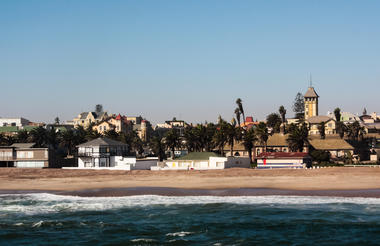
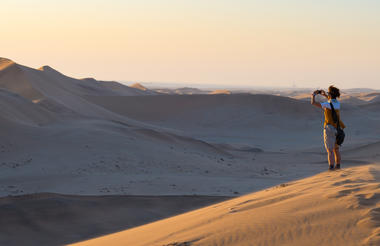
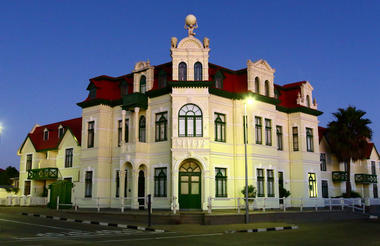
We suggest you stock up on some supplies for the next few days as there are few facilities en route. Bidding farewell to Swakopmund you head a short distance up the Skeleton Coast and can stop at one of our more recent shipwrecks, the Zeila, just south of Henties Bay. Turning inland you encounter the desert heat again as you move away from the coast. You will see the Brandberg Mountain, home to the highest peak in Namibia, shimmering in the heat haze. The small mining settlement of Uis offers a chance to refuel and have lunch or a cup of tea/coffee or an ice cream. Continuing north you are now in desert elephant territory; you might see their tracks on the road. It is amazing how tricky it is to spot such large creatures! On arrival at your overnight camp take a refreshing dip in the pool and maybe stretch your legs on a walk in the area around the camp. Time permitting you might want to visit the nearby Damara Living Museum to learn more about the Damara people.
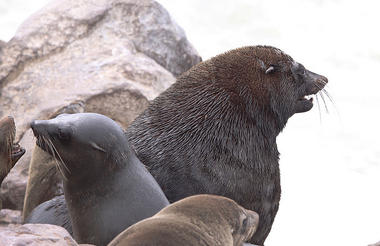
Enjoy a leisurely breakfast while taking in the beautiful landscapes. After bidding farewell to Damaraland, head east towards the game-filled plains of Etosha. En route, visit the Petrified Forest to see ancient stone logs alongside Welwitschia plants, with local guides explaining their origins. Continue east to Outjo to stock up on snacks and drinks for your stay in Etosha.
We recommend visiting the rock engravings at Twyfelfontein early this morning (it opens at 08:00). This UNESCO World Heritage site features the largest collection of rock engravings in southern Africa. Prepare for some walking and climbing to view the majority of the engravings; the full tour will take 1-2 hours. Afterward, head east towards Khorixas, where you can briefly visit the Petrified Forest, which is close to the road and will take around 20 minutes to view. Continue to Outjo, where you can stock up on supplies for the next few days.
If you have time on the first day and would like to explore Etosha on your own, feel free to do so. The following day, you can enjoy a full-day game drive in Etosha with the lodge in an open cruiser. Not included for now.
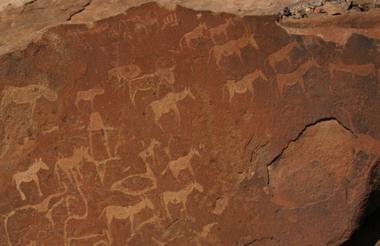
Full day game drive with picnic lunch in open cruiser
Sadly, it’s time to bid farewell to Etosha and start your journey towards Okonjima. Head south, passing through the farming town of Otjiwarongo, known for its “fat cows.” Just south of Otjiwarongo, turn off the main road and venture into the bush to reach Okonjima Plains Camp, situated on the 22,000-hectare private Okonjima Nature Reserve. Renowned for its diverse game species, Okonjima is particularly known for offering sightings of more elusive animals like leopards, brown hyenas, and pangolins. Plan your arrival to join the afternoon activity of your choice and explore Namibia’s lesser-known wildlife.
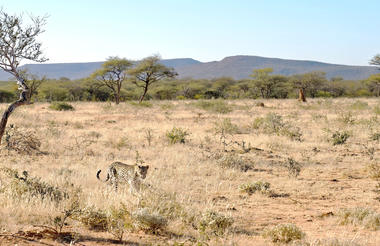
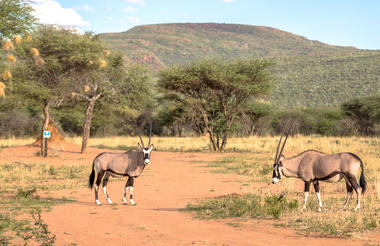
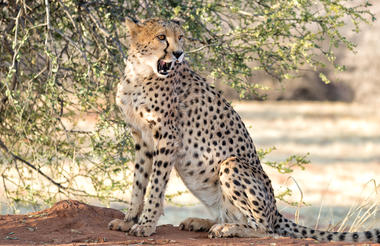
Sadly, your time in Namibia has come to an end. Head south from Okonjima Plains Camp, passing through Otjiwarongo, and make sure to reach the car rental agency by 10:30 at the latest for check-out and transfer to the airport. We hope you leave with many wonderful memories of your journey. Thank you for traveling with Great Explorations Namibia, and we look forward to welcoming you back in the future. Safe travels!




